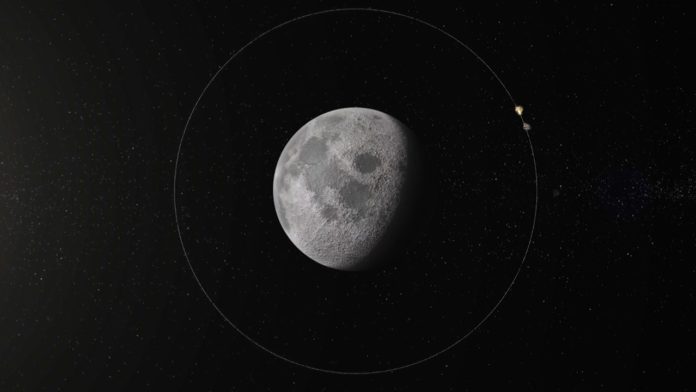Today, after a movement which took four seconds to reduce its orbit further, the moon landing Vikram, which separated from Indian spacecraft Chandrayaan 2, came nearer to the lunar surface.
The first de-boost manoeuvre to reduce its altitude was carried out at 8:50 a.m. by the Indian Space Research Organization (ISRO). Tomorrow, the lander will attempt to reach the south pole of the Moon at 1:40 a.m. on September 7, another manoeuvre is scheduled. The historic landing will be seen from the control room of the Space Agency by Prime Minister Narendra Modi.
In a post on its website, ISRO said, “The first de-orbiting manoeuvre for Chandrayaan 2 spacecraft was performed successfully today beginning at 0850 hours as planned, using the onboard propulsion system. The duration of the manoeuvre was four seconds,” It also added that “The orbit of Vikram Lander is 104 km x 128 km. Chandrayaan 2 orbiter continues to orbit the moon in the existing orbit and both the orbiter and lander are healthy,”
The Vikram heads into a moon-side region that has not yet been explored the majority of lunar landings occurred in the northern hemisphere or the equatorial region.
In the southernmost portion of China, there was an older mission, followed by Luna missions from Russia. Most Americans, including Apollo missions, landed in the Equatorial region of the Moon. China has a dark side of the moon rover at the moment.
After the achievement of the Chandrayaan 2 mission, India will become the fourth nation to make smooth landings on the moon after the United States, Russia and China.
ISRO suggests that other countries invest resources to achieve the southern pole of the moon too. For billions of years, sunlight has retained the moon craters in the South Pole and provides an uneasy record of the roots of the solar system. It is estimated that almost 100 million tonnes of water contains the continuously shadowed craters.












